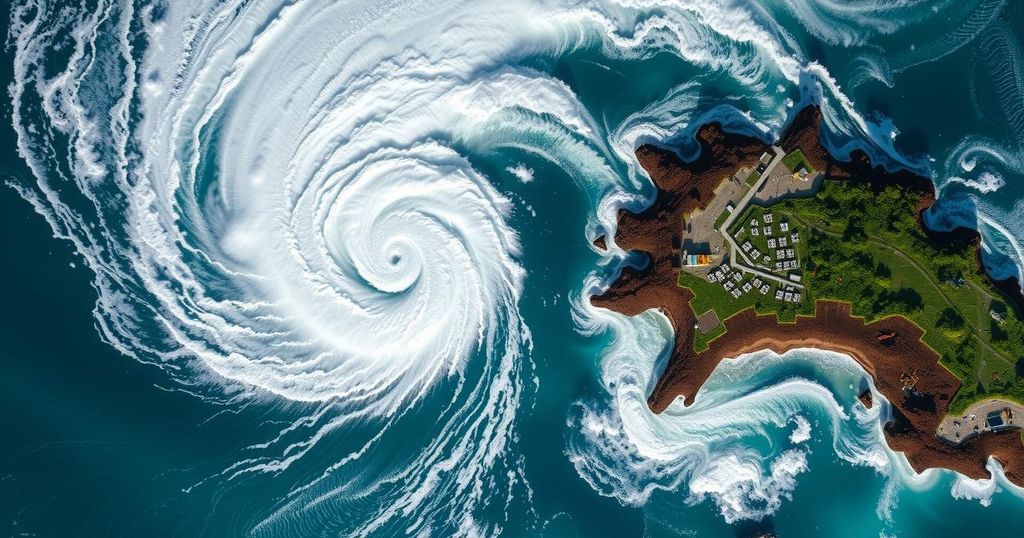On December 14, 2024, Cyclone Chido brought fierce winds and destruction to Mayotte, causing significant damage, particularly in Mamoudzou. Formed on December 5 in the Indian Ocean, it intensified rapidly before making landfall, marking it as the most severe storm to impact Mayotte in 90 years. Afterward, Chido continued its path, affecting Mozambique shortly after.
On December 14, 2024, Cyclone Chido struck Mayotte, delivering devastating winds and inclement weather that severely affected the communities on the island. Reporting indicates wind gusts reached 225 kilometers (140 miles) per hour upon landfall, leading to extensive damage, particularly in the capital city, Mamoudzou, and the nearby airport in Pamandzi. Formed on December 5 in the southeastern Indian Ocean, Chido rapidly intensified, hitting Agaléga before reaching its peak strength before impacting Mayotte.
Chido developed in favorable conditions for cyclonic activity, including warm waters and low wind shear, which supported its intensification. Notably, the cyclone was categorized as a strong Category 4 storm on the Saffir-Simpson scale, marking it as the most powerful to affect Mayotte in over nine decades. Following its landfall in Mayotte, the cyclone proceeded west, making landfall in Mozambique on December 15, where it maintained its destructive capabilities.
The disturbance showcased significant destruction across eastern and northern parts of Mayotte, with assessments by the European Union highlighting widespread structural damage. This includes losses in residential areas, public facilities, and infrastructural components, with a focus on the extensive impact observed in urban zones. Satellite imagery from the NOAA-20 satellite documented Cyclone Chido shortly after it hit the islands, underscoring the enormity of the disaster as it unfolded.
Cyclone activity, particularly in the Indian Ocean, poses significant threats to island territories like Mayotte. This region is susceptible to severe weather patterns influenced by various meteorological conditions. The Saffir-Simpson scale categorizes hurricanes based on wind speed, with Category 4 indicating sustained winds between 130 and 156 mph, which can lead to catastrophic damage. Cyclone Chido’s development illustrates a pattern of intensification wherein conditions aligned to facilitate its growth, showcasing the vulnerabilities of small island nations to such climactic threats.
Cyclone Chido represents a significant meteorological event that has inflicted considerable damage on the islands of Mayotte. Its rapid intensification and overpowering winds underscore the growing challenges faced by vulnerable territories due to climate-related phenomena. The cyclone’s aftermath necessitates urgent response efforts to address the damages and assist affected communities in their recovery processes, highlighting the importance of preparedness for future weather-related disasters in this region.
Original Source: earthobservatory.nasa.gov






